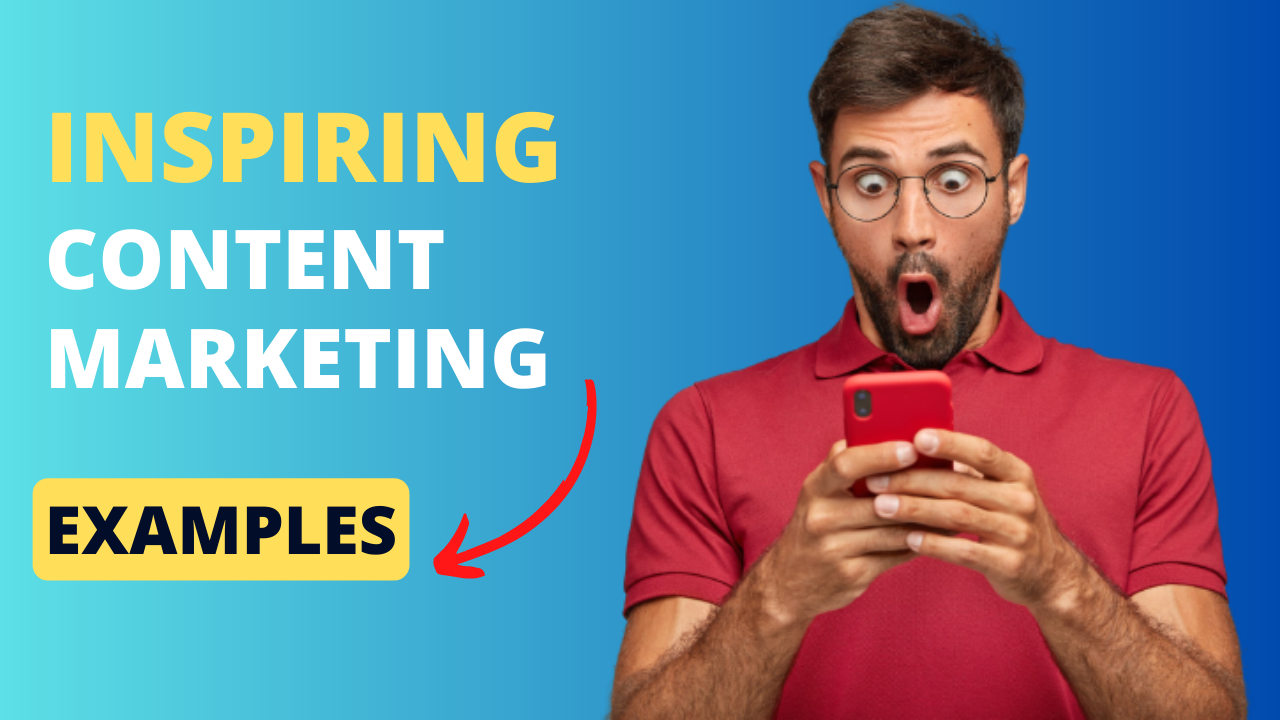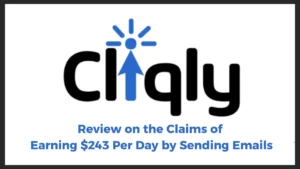Are you looking for inspiring examples of content marketing that can drive your business forward? Look no further! In this article, we will dive into the world of content marketing and explore some remarkable examples that have captured audiences’ attention and delivered exceptional results. As a renowned expert in the field, I will provide you with valuable insights and strategies to help you craft compelling content that resonates with your audience and boosts your brand’s visibility.
Table of Contents
- Introduction
- The Power of Storytelling
- Leveraging User-Generated Content
- Interactive and Immersive Experiences
- Embracing Video Marketing
- Effective Social Media Campaigns
- Influencer Partnerships
- Building a Strong Brand Community
- Utilizing Data and Personalization
- Content that Educates and Informs
- Creative Infographics and Visuals
- Podcasts: The Power of Audio
- Thought Leadership and Expertise
- Leveraging User Reviews and Testimonials
- Gamification: Making Content Fun and Engaging
- Conclusion
- FAQs
Introduction
In today’s highly competitive digital landscape, content marketing has emerged as a cornerstone of successful marketing strategies. It offers businesses a powerful tool to connect with their target audience, build brand awareness, and ultimately drive conversions. By providing valuable and engaging content, you can position yourself as a trusted authority in your industry and gain a competitive edge. In this article, we will explore inspiring examples of content marketing campaigns that have left a lasting impact, revealing the strategies and tactics behind their success.

The Power of Storytelling
Storytelling has always been a captivating and influential method throughout history. Brands like Nike and Coca-Cola have masterfully harnessed the power of storytelling to create deep emotional connections with their customers. They go beyond simply promoting product features and instead focus on crafting narratives that resonate on a personal level. For instance, Nike’s “Dream Crazy” campaign featuring Colin Kaepernick not only showcased their athletic apparel but also sparked conversations about social justice and equality. By aligning their brand with powerful stories, Nike has inspired and connected with their audience on a deeper, more meaningful level.
Similarly, Coca-Cola’s iconic holiday campaigns evoke feelings of joy, togetherness, and nostalgia. Through heartwarming stories that revolve around family and celebrations, Coca-Cola has created a strong emotional bond with its consumers. These examples demonstrate the immense power of storytelling in creating a lasting impact and building brand loyalty.
Leveraging User-Generated Content
User-generated content (UGC) is a goldmine for content marketers. It allows brands to tap into the creativity and authenticity of their customers, building a sense of community and trust around their brand. One company that has successfully leveraged UGC is GoPro. By encouraging users to share their thrilling adventure videos and photos, GoPro has built a passionate community of enthusiasts. The brand showcases UGC on their platforms, highlighting the incredible experiences captured by their customers. This not only amplifies their reach but also fosters a deep connection between the brand and its audience.
Interactive and Immersive Experiences
In the era of digital media, interactive content has become increasingly popular. Brands like Red Bull have taken advantage of this trend by creating immersive experiences that captivate and engage their audience. One standout example is Red Bull’s “Stratos” campaign, where they live-streamed Felix Baumgartner’s record-breaking skydive from the stratosphere. This incredible feat left viewers on the edge of their seats and generated massive buzz. The key takeaway here is to create unique and memorable experiences that leave a lasting impression on your audience.
Embracing Video Marketing
Video marketing has become an integral part of content strategies. With the rise of platforms like YouTube and TikTok, brands have a powerful medium to connect with their target audience through visual storytelling. Companies like Blendtec have embraced video marketing by creating the immensely popular “Will It Blend?” series. In these videos, Blendtec’s CEO blends various objects, showcasing the power and durability of their blenders. The entertaining and informative nature of these videos has garnered millions of views and significantly increased brand visibility.
Effective Social Media Campaigns
Social media has revolutionized the way brands connect with their audience. By running effective social media campaigns, companies can engage their target customers and foster meaningful interactions. Old Spice’s “The Man Your Man Could Smell Like” campaign is a prime example. Through witty and humorous videos featuring a charismatic spokesperson, Old Spice redefined their brand image and attracted a younger audience. Their campaign went viral, generating millions of views and increasing brand awareness.
Influencer Partnerships
Influencer marketing has become a prevalent strategy for brands seeking to reach a wider audience and build credibility. By collaborating with influencers who align with their values and target demographics, companies can tap into their followers’ trust and engagement. An inspiring example is Daniel Wellington, a watch brand that partnered with Instagram influencers to showcase their stylish timepieces. The carefully curated and aesthetically pleasing posts generated significant buzz and increased brand recognition among the millennial audience.
Building a Strong Brand Community
Creating a strong brand community is essential for fostering customer loyalty and advocacy. Brands like Apple have successfully built a community of passionate followers who identify with their products and values. Through exclusive events, user forums, and product launches, Apple encourages its customers to connect and engage with each other. This sense of belonging and shared enthusiasm strengthens the bond between the brand and its community, leading to increased brand loyalty.
Utilizing Data and Personalization
Data-driven marketing allows brands to deliver personalized experiences to their customers. By leveraging customer data and insights, companies can tailor their content to match individual preferences and needs. Netflix is a prime example of a brand that effectively utilizes data and personalization. Through sophisticated algorithms, they recommend personalized movie and TV show suggestions to each user, creating a highly personalized and engaging viewing experience.
Content that Educates and Informs
Creating content that educates and informs your audience establishes your brand as a trusted source of knowledge and expertise. HubSpot, a leading marketing software company, excels in producing valuable educational content. Their blog, Academy courses, and webinars cover a wide range of topics, helping businesses improve their marketing strategies. By providing valuable insights and actionable advice, HubSpot has become a go-to resource for marketers worldwide.
Creative Infographics and Visuals
Visual content, such as infographics and images, can effectively convey complex information in a visually appealing manner. Brands like National Geographic have mastered the art of creating stunning visuals that tell powerful stories. Their infographics and photographs captivate audiences, leaving a lasting impression and driving engagement. Infographics are particularly effective in simplifying data and statistics, making them more digestible and shareable.
Podcasts: The Power of Audio
Podcasts have gained tremendous popularity in recent years, providing a unique opportunity for brands to connect with their audience through the power of audio. Serial, a true crime podcast, revolutionized the podcasting industry and attracted millions of listeners worldwide. Brands can create their podcasts to share industry insights, interviews with experts, and compelling stories. By leveraging the intimate and immersive nature of podcasts, brands can build a loyal following and establish themselves as thought leaders in their respective fields.
Thought Leadership and Expertise
Positioning yourself as a thought leader in your industry can significantly impact your brand’s reputation and credibility. Companies like Moz have achieved this by consistently publishing high-quality and insightful content that helps marketers improve their SEO strategies. By sharing their expertise and providing valuable resources, Moz has established itself as a trusted authority in the field of search engine optimization.
Leveraging User Reviews and Testimonials
User reviews and testimonials play a vital role in building trust and credibility for your brand. Companies like Amazon have built their reputation on user-generated reviews, which help customers make informed purchasing decisions. By displaying authentic and positive reviews on your website or social media platforms, you can instill confidence in potential customers and encourage conversions.
Read More: Marketing Ebooks: 10 Powerful Resources to Master the Game
Gamification: Making Content Fun and Engaging
Gamification involves incorporating game elements into your content to make it more interactive and enjoyable. Brands like Nike have successfully implemented gamification strategies in their fitness apps, encouraging users to set goals, earn rewards, and compete with friends. By making content fun and engaging, brands can increase user participation, drive loyalty, and create a memorable brand experience.
Discover ” Content Chemistry, 6th Edition:: The Illustrated Handbook for Content Marketing (A Practical Guide to Digital Marketing Strategy, SEO, Social Media, Email Marketing, & Analytics)Book”

“The most practical book ever written about modern digital marketing,” as acclaimed by Jay Baer, this illustrated handbook is the culmination of countless conversations with numerous companies about web marketing. It presents a comprehensive collection of highly effective advice covering various aspects, including practical approaches to search engine optimization, social media, and email marketing. Moreover, it delves into the social, analytical, and creative dimensions of modern marketing, providing a well-rounded understanding of the subject.
In Content Chemistry, author Andy Crestodina, an esteemed authority in the field, imparts his extensive knowledge on content marketing. The book offers invaluable insights into the theory and practice behind this essential marketing strategy. Additionally, it equips readers with tips on leveraging analytics for ongoing optimization and continuous improvement of their marketing efforts. With the 6th edition, the content has been updated to reflect the latest technologies and trends that shape the digital marketing landscape.
Endorsed by Adam Franklin and Toby Jenkins, authors of Web Marketing That Works, Andy Crestodina’s expertise in content marketing is highly regarded. Content Chemistry is hailed as a must-read resource that equips individuals with the precise knowledge they need to excel in the field. Gini Dietrich, CEO of Arment Dietrich and author of Spin Sucks, commends the book’s depth of insights, to the extent that it has become an indispensable reference on her desk, consulted on a near-daily basis. It comes highly recommended for anyone involved in content marketing, providing a wealth of practical wisdom and strategies to drive success.
Conclusion
In today’s competitive digital landscape, content marketing continues to evolve as a powerful strategy for businesses to connect with their audience and achieve their marketing goals. By embracing storytelling, leveraging user-generated content, creating immersive experiences, and utilizing various content formats, brands can inspire and engage their customers on a deeper level. Additionally, through effective social media campaigns, influencer partnerships, and personalized content, brands can build strong communities and establish themselves as thought leaders in their industries. By staying innovative and adapting to emerging trends, brands can create impactful content marketing campaigns that resonate with their audience and drive long-term success.
FAQs
- Q: What are examples of content marketing? A: Examples of content marketing include storytelling campaigns, user-generated content initiatives, interactive experiences, video marketing, social media campaigns, and partnerships with influencers.
- Q: What is inspiring content? A: Inspiring content is content that evokes emotions, creates connections, and motivates the audience to take action or change their perspective.
- Q: What are the 3 most important things in content marketing? A: The three most important things in content marketing are creating valuable and relevant content, understanding your target audience, and measuring the effectiveness of your campaigns.
- Q: What is the most popular marketing content? A: Video content is currently one of the most popular forms of marketing content, as it allows for visual storytelling and authentic engagement.
- Q: What are the 5 types of content? A: The five types of content include written articles, videos, infographics, podcasts, and social media posts.
- Q: What is an example of good content? A: An example of good content is content that is informative, engaging, well-researched, and provides value to the target audience.




